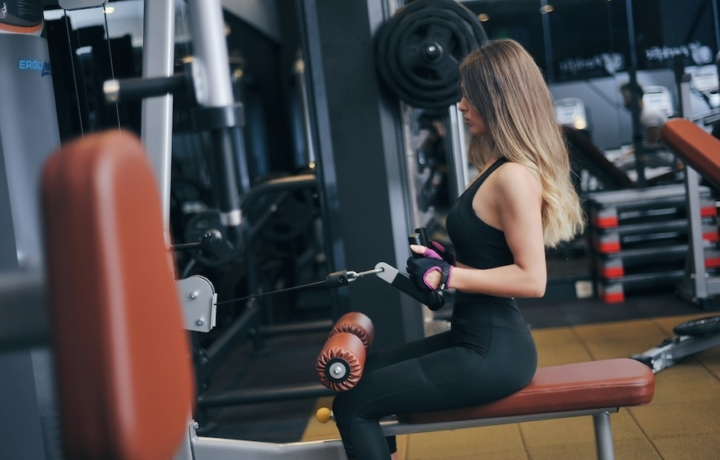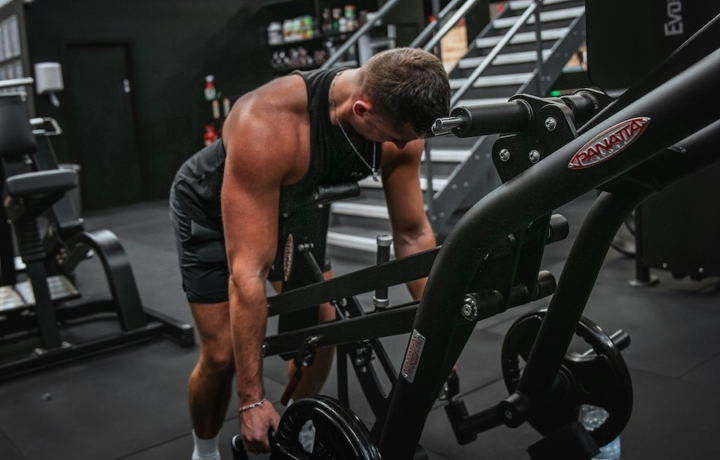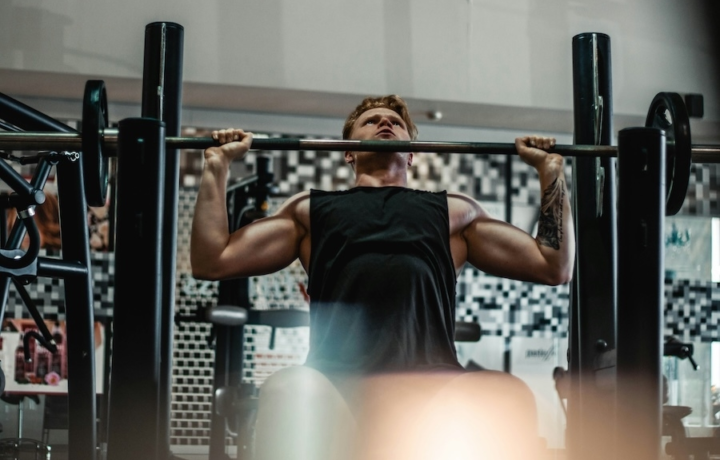Exercise
Seated Cable Row

Seated Cable Row
How to Perform
- Sit upright on the cable row bench with your knees slightly bent and feet firmly placed on the footrests.
- Grab the handle with both hands using a neutral grip (palms facing each other) and extend your arms fully in front of you.
- Pull your shoulders back and down, keeping your chest up and core braced as you prepare to initiate the movement.
- Exhale as you pull the handle toward your torso, driving your elbows back and keeping them close to your body.
- Maintain a strong, upright posture throughout the movement, avoiding the tendency to lean backward to generate momentum.
- At the end position, squeeze your shoulder blades together while the handle touches your lower abdomen, holding briefly for 1-2 seconds.
- Inhale as you slowly return the handle to the starting position with controlled movement, allowing your arms to fully extend without rounding your shoulders forward.
- Maintain tension in your back muscles throughout the exercise, never allowing the weight stack to rest between repetitions.
Important information
- Keep your back straight throughout the entire movement—never round your spine or use momentum to move the weight.
- Focus on pulling with your back muscles rather than your arms by initiating the movement by retracting your shoulder blades.
- Adjust the seat height so the cable pulley aligns with your mid-chest for optimal biomechanics and to target the correct muscles.
- If you experience lower back pain, decrease the weight and check that you're maintaining proper form with a neutral spine position.

Seated Cable Row
Exercise Details
Primary Muscles
Muscle Groups
Mechanic
Risk Areas
Built for progress
Take the guesswork out of training
Create personalized AI-powered workout plans that evolve with you. Train smarter, track every rep and keep moving forward, one workout at a time.






The Seated Cable Row stands as a cornerstone back exercise in strength training programs, offering impressive development potential for the entire posterior chain. This compound movement primarily targets the latissimus dorsi (lats), while significantly engaging the trapezius muscles (traps) and recruiting the biceps as secondary movers. Perfect for both bodybuilders seeking aesthetic development and powerlifters looking to enhance pulling strength, this exercise deserves its reputation as an intermediate-level movement that continues to deliver results even as you advance in your fitness journey.
What makes the Seated Cable Row particularly valuable is its constant tension throughout the movement, something free weights simply cannot replicate. The cable mechanism ensures your muscles remain engaged at every point in the range of motion, creating an optimal environment for hypertrophy while establishing the mind-muscle connection that separates casual lifters from dedicated athletes.
For strength enthusiasts, the exercise builds the essential posterior chain power necessary for deadlifts, barbell rows, and other fundamental compound movements. Many experienced lifters appreciate how the Seated Cable Row allows for training to near-failure without the safety concerns associated with free-weight alternatives. This makes it ideal for those intense training phases where maximum muscle fiber recruitment is the goal. The exercise also offers tremendous versatility through attachment options: from wide handles that emphasize the outer lats to V-handles that allow deeper contraction in the mid-back region.
For optimal results, most strength coaches recommend incorporating this movement into your routine 1-2 times weekly, typically performing 3-4 sets in the 8-12 repetition range for hypertrophy or 4-6 sets of 4-6 reps for strength-focused training. As with any resistance exercise, progressive overload remains the key to continued development, so tracking your performance and gradually increasing the resistance will ensure your back development continues to advance. The Seated Cable Row truly represents one of those rare exercises that delivers both practical strength and aesthetic results.
FAQ - Seated Cable Row
The Seated Cable Row primarily targets the latissimus dorsi (lats), while also significantly engaging the trapezius muscles and rhomboids. Your biceps, rear deltoids, and forearm muscles work as secondary movers during this compound exercise.
Maintain a straight back with a slight forward lean, pull the handle toward your lower abdomen by driving your elbows back, and avoid using momentum by controlling the movement in both directions. Keep your chest up and shoulders retracted throughout the exercise to maximize back engagement and minimize injury risk.
Incorporate Seated Cable Rows 1-2 times weekly, performing 3-4 sets of 8-12 reps for muscle growth or 4-6 sets of 4-6 reps for strength development. Allow 48-72 hours of recovery between training sessions that target the same muscle groups.
Use a wide bar attachment to emphasize outer lats and upper back width, a V-handle to target mid-back thickness and rhomboids, or a single-arm handle for addressing muscle imbalances. Experiment with different attachments throughout your training cycles to stimulate all areas of your back musculature.
Avoid rounding your lower back, using excessive weight that causes jerking motions, and relying on arm strength rather than back engagement. Don't fully extend your arms at the bottom position as this can place unnecessary stress on your shoulder joints and diminish tension on the target muscles.











